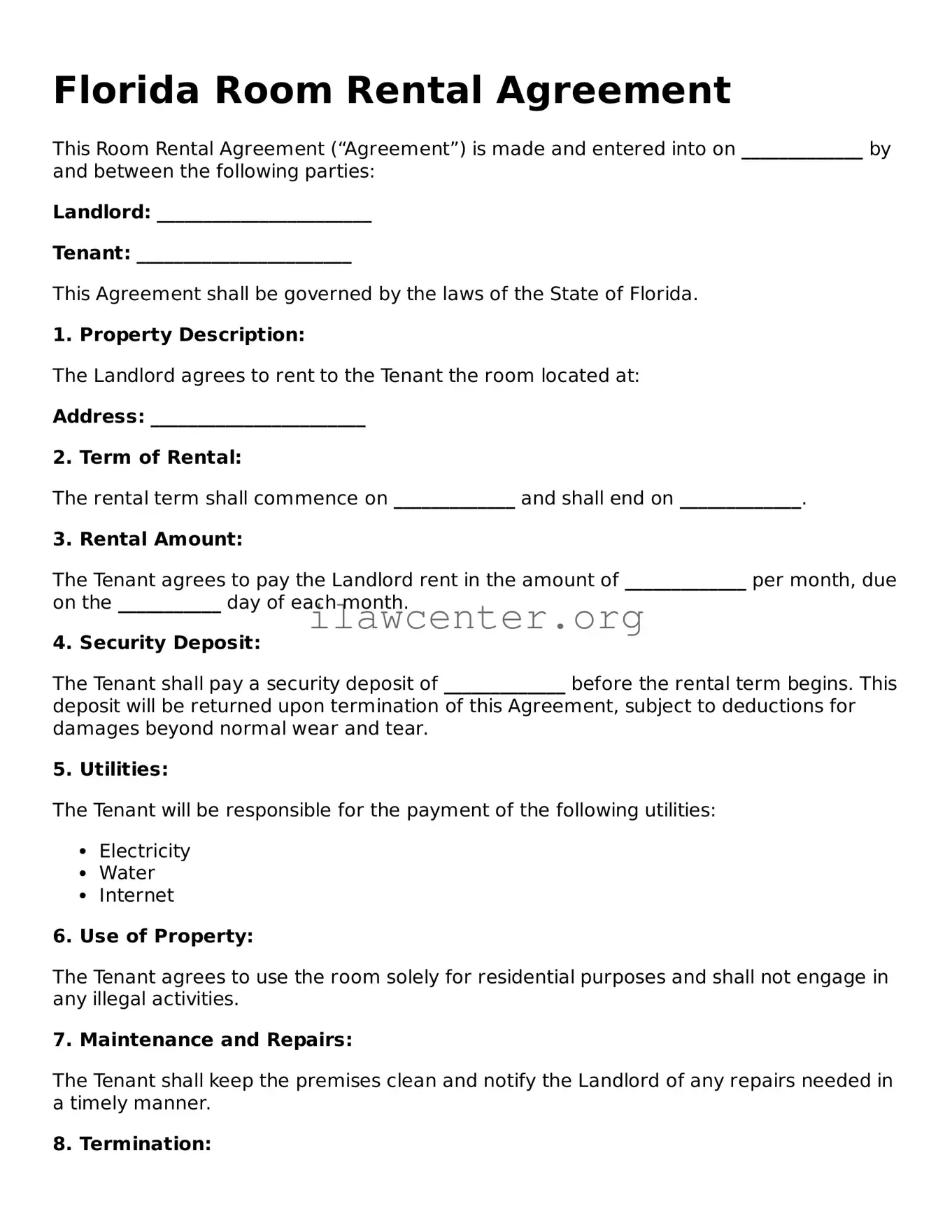Instructions on Utilizing Florida Room Rental Agreement
Filling out the Florida Room Rental Agreement form is a straightforward process that ensures all necessary details are clearly outlined. Follow the steps below to ensure accurate and complete information is provided.
- Start by entering the date on which you are filling out the form.
- Next, input the name of the landlord followed by their contact information including phone number and address.
- Provide the tenant's name and contact information in the designated sections.
- Fill in the address of the rental property. Make sure to include any apartment or unit numbers.
- Indicate the rental term, specifying whether it is a month-to-month agreement or a fixed-term lease.
- List the monthly rent amount and any applicable security deposit information.
- Include details about utilities. Specify which utilities will be included in the rent and which will be the tenant's responsibility.
- Review the form for any special conditions or rules that both parties must abide by during the rental period.
- Finally, make sure both parties sign and date the form in the designated areas.
